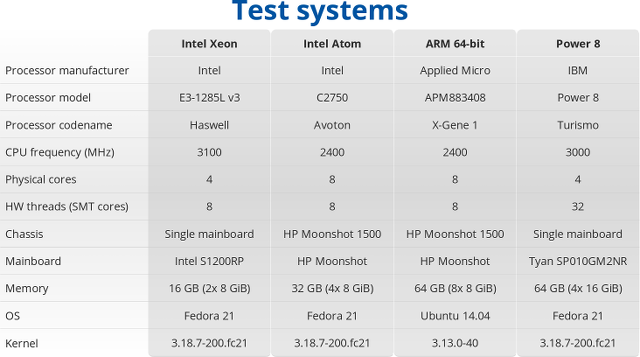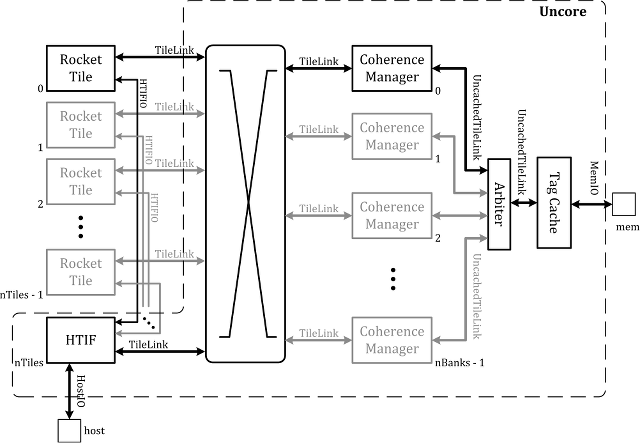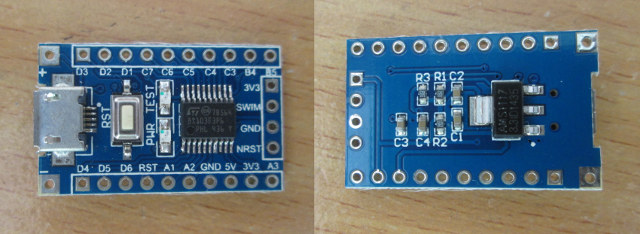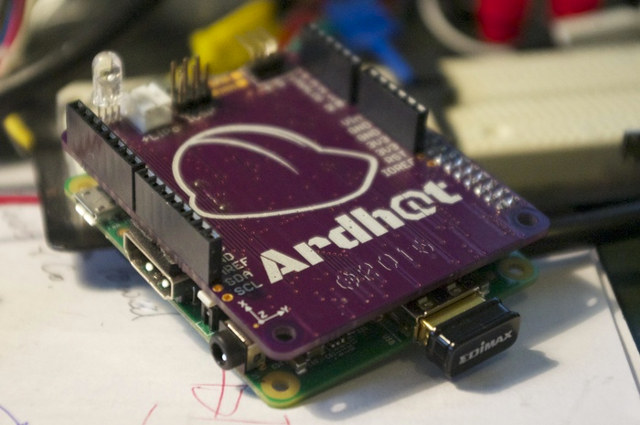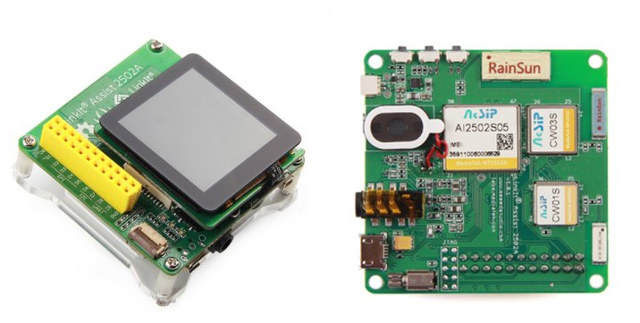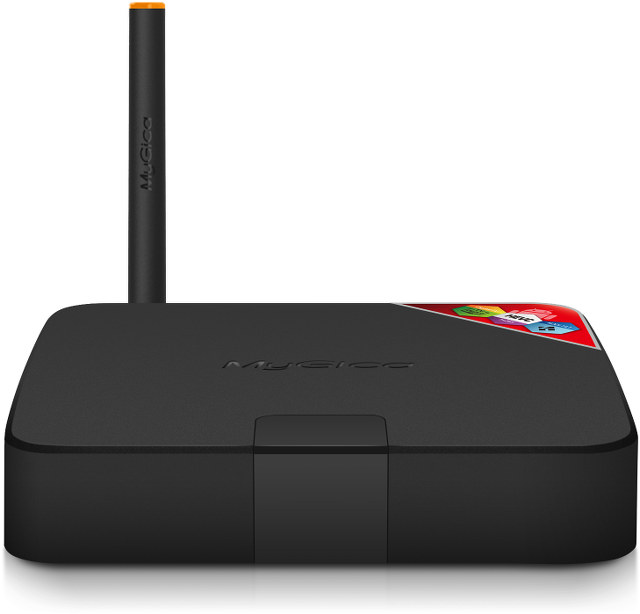LeTV has launched three new smartphones namely LeTV S1, LeTV S1 Pro, LeTV Max with zero bezel on its sides, a new USB type C reversible connector, and powered by Mediatek Helio X10 octa core Cortex A53 processor (S1) and Qualcomm Snapdragon 810 big.LITTLE octa core Cortex A53 & A57 processor (S1 Pro & Max) combined with 3 to 4GB RAM, and up to 128GB internal storage. LeTV smartphones specifications: SoC S1 – Mediatek Helio X10 (MT6795) octa core Cortex A53 @ 2.2 Ghz with PowerVR G6200 GPU @ 700 MHz S1 Pro & Max – Qualcomm Snapdragon 810 quad core Cortex A53 + quad core Cortex A57 in big.LITTLE configuration with Adreno 430 GPU System Memory S1 – 3 GB LPDDR3 S1 Pro & Max – 4 GB LPDDR4 Storage S1 – 16, 32 or 64 GB eMMC 5.0 S1 Pro – 32 or 64 GB eMMC 5.0 Max […]
Mifree HX-V5 Bluetooth Smart Fitness Tracker sells for $14
Mifree HX-V5 is a waterproof Bluetooth 4.0 activity tracker with fitness tracking and sleep monitoring functions just like Vidonn X5, except the device bring the price level to a new low, as it sells for just $14 including shipping on GeekBuying, and currently about $20 on Aliexpress, but there are few sellers, and more may come up around the $15 mark. HX-V5 smart band specifications differ depending on the sites too, not for the user exposed features, but for the internals [Update: GeekBuying told me they were given the wrong information, so I updated the specs accordingly): SoC – TI CC2541 Bluetooth SoC Storage – 4MB flash, enough to preserve 60 days of data Display – 0.91″ OLED display, 128×32 pixels Connectivity – Bluetooth 4.0 LE Sensors – 3-axis MEMS sensor IP Rating – IP67 (unlikely IMHO) Battery – 3.7V/70mAh Li-ion battery, good for 10 to 12 days. 2 to 3 hours charging time. Dimensions […]
HPC Performance & Power Usage Comparison – Intel Xeon E3 vs Intel Atom C2720 vs Applied Micro X-Gene 1 vs IBM Power 8
Last year, the CERN published a paper comparing Applied Micro X-Gene (64-bit ARM) vs Intel Xeon (64-bit x86) Performance and Power Usage, and they’ve now added IBM Power 8 and Intel Atom Avoton C2750 processor to the mix in a new presentation entitled “A look beyond x86: OpenPOWER & AArch64“. So four systems based on Intel Xeon E3-1285L, Intel Atom C2750, Applied Micro X-Gene 1, and IBM Power 8 were compared, all running Fedora 21, except the HP Moonshot 1500 ARM plarform running Ubuntu 14.04 and an older kernel. All four systems use gcc 4.9.2, and Racktivity intelligent PDUs were used for power measurement. I’ll just share some of their results, you can read the presentation, or go through the benchmark results to find out more. HEP-SPEC06 is a new High Energy Physics (HEP) benchmark for measuring CPU performance developed by the HEPiX Benchmarking Working Group, and here it’s not […]
lowRISC Open Source SoC Project Announces its First Release with Tutorials for Simulators and Zedboard
lowRISC project aims to produce a completely open-source SoC (System-on-Chip) based on the 64-bit RISC-V instruction set architecture, as well as a corresponding development board, thus eventually producing a fully open hardware systems. The project has now announced its first release “tagged memory preview release” with a tutorial explaining how this has all been designed, and how to run simulations with software tools, or FPGA boards such as Zedboard. The project is based on Rocket core, written in Chisel language by the RISC-V team at UC Berkeley. Chisel can generate code to produce a cycle-accurate C++ emulator, Verilog optimised for FPGAs or Verilog for use in an ASIC flow.If you want to try it out, you’ll need a Linux machine, preferably running Ubuntu 14.04 64-bit, with GNU GCC 4.8 installed, and follow the tutorial in order to get the source code, and build tools such as riscv64-unknown-elf-gcc compiler, and […]
How to Program STMicro STM8S $1 Board in Linux
In January, I discovered there was such thing as a one dollar development board based on STMicro STM8S103F3P6 8-bit MCU with 1KB SRAM, 8KB flash, and 640 bytes EEPROM, some GPIOs as well as I2C, UART, SPI, ADC, and PWM signals. Links to documentation and source code were provided, but development tools were only Windows based. However, one of my reader informed me SDCC (Small Devices C Compiler) supported STM8, and development in Linux should be feasible. So I decided to buy the board on eBay for $1.62, as well as an ST_link V2 programmer for STM8 / STM32 for $4.52 in order to flash the firmware. The board came pretty quickly, i.e. within 2 to 3 weeks. But due to a lost package, the programmer took nearly 3 months to reach me, as the seller had to re-send after I failed to receive it within 2 months. It comes […]
ARDHAT adds Arduino Shield Compatibility, an ISM Band Radio to Raspberry Pi and ODROID-C1 Boards (Crowdfunding)
NinjaBlocks created Pi Crust add-ons board adding a 433MHz radio and Arduino compatibility to the Raspberry Pi Model A & B a few years ago, but the product has since been removed from their store. But a startup called ubIQio has now created a similar product compatible with Raspberry Pi Model A+, B+ and B2, as well as ODROID-C1 which also comes with a 40-pin R-Pi header. The ARDHAT board is a HAT compatible add-on board with an Atmel MCU, Arduino headers, as well as an optional long range mesh ISM radio (433, 868 and 915 MHz) and various sensors. There are four versions of the board: Basic Ardhat, Ardhat-I, and Ardhat-W and Ultra, which share the following specifications: MCU – Atmel MCU @ 16MHz Headers and I/Os Arduino compatible header accepting 5V Arduino shields 12 ch PWM O/P, 6 ch analog I/P Real-time Clock Programmable Power/Navigation combo switch Programmable […]
Mediatek LinkIt Assist 2502 Open Source Hardware Board Targets Wearables and IoT Applications
After LinkIt ONE, Mediatek Labs has introduced a new IoT development kit based on their Aster M2502 ARM7 processor with LinkIt Assist 2502 comprised of AcSiP MT2502A IoT SiP Core module, a 802.11b/g/n module, a GNSS module, and an exchangeable 240×240 16-bit color capacitive touch LCM Board. The AcSiP module can also be purchased separately, so you could use LinkIt Assist 2502 board for early development, because moving to your custom hardware based on AcSiP MT2502A module. LinkIt Assist 2502A specifications: MCU – AcSiP AI2502S05 module with MT2502A (Aster) ARM7 EJ-STM processor @ 260MHz, 4MB RAM, 16MB flash Display – 240×240 LCD module; 16-bit color depth; transflective; based on ST7789S driver IC. Connectivity Wi-Fi 802.11 b/g/n via AcSiP CW01S module based on MT5931 SoC Bluetooth 2.1 SPP and 4.0 GATT dual mode (part of MT2502A) GPS via AcSiP CW03S module based on MT3332 chip supporting GPS, GLONASS, and BeiDou. GSM […]
Mygica ATV586 Amlogic S805 Android TV Box Comes with DVB-T2 or ATSC Tuner
One of the first quad core Android DVB-T2 receiver was VideoStrong K1 that now sells for $80 on Aliexpress, but there’s now some competition from Geniatech, with the same Amlogic S805 processor, thanks to Mygica ATV586 Android TV box featuring either a DVB-T2 or ATSC tuner. ATV586 Specifications: SoC – Amlogic S805 quad core ARM Cortex A5 @ 1.5GHz with quad core Mali-450MP GPU System Memory – 1 GB DDR3 Storage – 4 GB NAND flash + micro SD slot (up to 32GB) Connectivity – 10/100M Ethernet, 802.11 b/g/n Wi-Fi Video & Audio Output – HDMI 1.4 Video Codec – H.265, H.264 etc.. up to 1080p60 Tuner DVB-T & DVB-T2 standard with single input terminal (75 Ohm); Frequency – 48.25 – 863.25 MHz; Bandwidth: 6, 7 or 8 MHz ATSC also supported (with a different tuner) USB – 2x USB 2.0 ports Misc – IR sensor Power Supply – 5V/2A […]



